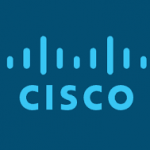
Bell delivers 4G LTE mobile services with Cisco ASR 5000
Last week, Bell Mobility announced it’s continuing to build out its 4G Long Term Evolution (LTE) mobile services, now servicing a number of cities across Canada from Vancouver to Yellowknife to Halifax-Dartmouth. Using the Cisco ASR 5000 Series mobile multimedia core platform, Bell is delivering higher bandwidth and greater intelligence for faster mobile Internet services and improved user experiences.
This is more than just a services announcement however. There is a definite and growing demand for superior wireless experiences across Canada, driven by the sheer number of mobile users, and Bell has positioned itself expertly to take advantage.
The proliferation of mobile devices is one of the biggest technology booms of the last few years. Millions of people worldwide are benefitting from the freedom to access and send information on the go, whether for work or just for fun. Once the purview of just cell phone users, the skyrocketing adoption of smartphones and tablets has opened the mobile device floodgates to even more users.
Recently, Cisco released the Visual Networking Index (VNI) Global Mobile Data Traffic Forecast for 2011 to 2016. Among the eye-opening results is the prediction that worldwide mobile data traffic will increase 18-fold over the next five years, reaching 10.8 exabytes per month – or an annual run rate of 130 exabytes – by 2016. To put that into perspective, 130 exabytes of mobile traffic is equivalent to 33 billion DVDs, or 4.3 quadrillion MP3 files.
Or in other words, 4,300,000,000,000,000 MP3 files annually.
Note that we’re talking about data traffic, because although this may be stating the obvious, mobile traffic has long surpassed basic voice services. It’s about sending text messages, accessing e-mail, surfing the Web, sending video to friends and colleagues, interactive gaming and updating Facebook and Twitter. Basically anything you can do on a desktop computer, but with the freedom to roam about at the same time. Considering that mobile Internet-connected devices are expected to number more than 10 billion by 2016 (exceeding the world’s projected population of 7.3 billion), ensuring that a strong network is in place to handle the demand is a necessity. Canada-specific forecasts from our recent VNI study can be found here.
Cisco foresaw this growing demand a couple of years ago when we unveiled the ASR 5000, specifically designed to accommodate the rapid growth of mobile Internet traffic and multimedia applications. It’s the type of tool service providers like Bell can benefit from to offer their customers a richer and more robust mobile broadband.
I’m excited that we offer a leading-edge product such as the ASR 5000 to our service provider customers, and that those customers are among the most forward-thinking in the world. It means Canadians can be free to roam with the confidence that they won’t miss important phone calls, texts, work e-mails or the photos from friends and family. Afterall, keeping Canadians connected – at work, home or at play – is what we all strive to do.
Tags:- 4G
- Bell
- Bell Canada
- cisco canada
- Cisco Visual Networking Index
- LTE
- mobile devices
- routing
- Roy Purtill
- service provider
- VNI



